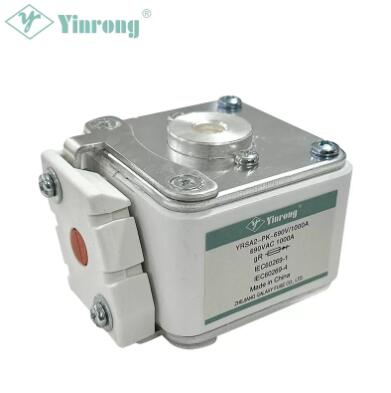Understanding the Materials Used in Square Body Ultra Fast gR Fuses
2024-08-22
Square Body Ultra Fast gR fuses are critical components in electrical systems, particularly in protecting semiconductor devices such as diodes, thyristors, and IGBTs. These fuses are designed to interrupt overcurrent conditions quickly, preventing damage to sensitive components. The effectiveness and reliability of these fuses largely depend on the materials used in their construction. In this blog, we'll explore the typical materials used in the construction of Square Body Ultra Fast gR fuses and why these materials are chosen.
What is a Square Body Ultra Fast gR Fuse?
Before diving into the materials, it's important to understand what a Square Body Ultra Fast gR fuse is. These fuses are specifically designed to protect semiconductor devices from short-circuit currents. The "gR" designation indicates that the fuse provides both overload and short-circuit protection, making it suitable for a wide range of applications. The square body design allows for compact installation, and the ultra-fast operation ensures that the fuse responds almost instantaneously to overcurrent events.
Key Materials Used in Construction
1. Fuse Element (Silver or Copper)
- The fuse element is the most critical part of the fuse, responsible for carrying the electrical current and melting under overcurrent conditions to interrupt the circuit.
- Silver: Silver is commonly used due to its excellent electrical conductivity, high melting point, and predictable melting characteristics. Silver elements ensure a precise and rapid response to overcurrent conditions.
- Copper: In some designs, copper may be used as a cost-effective alternative to silver. While it also has good conductivity, copper fuse elements are often coated with silver to enhance performance.
2. Body Material (Ceramic or Fiberglass)
- The body of the fuse provides structural support and electrical insulation. It must withstand high temperatures and mechanical stresses during operation.
- Ceramic: High-strength ceramic materials are commonly used due to their excellent thermal and electrical insulation properties. Ceramics can withstand the extreme temperatures generated during fuse operation, preventing damage to surrounding components.
- Fiberglass: In some cases, fiberglass-reinforced materials are used for the fuse body. Fiberglass offers good mechanical strength and thermal resistance, though it may not perform as well as ceramics in extremely high-temperature applications.
3. End Caps (Copper or Brass with Silver Plating)
- End caps provide electrical connection points and secure the fuse element within the body.
- Copper: Copper is commonly used for end caps due to its excellent conductivity and ease of fabrication.
- Brass: Brass is an alternative material that offers good strength and corrosion resistance.
- Silver Plating: End caps are often silver-plated to improve conductivity and reduce contact resistance, ensuring reliable operation and reducing power loss.
4. Arc Quenching Medium (Silica Sand)
- During a fault condition, an arc is generated when the fuse element melts. To extinguish this arc quickly and safely, an arc quenching medium is used.
- Silica Sand: Silica sand is commonly used as the arc quenching medium due to its ability to absorb heat and dissipate energy rapidly. It prevents the arc from persisting, ensuring the fuse operates correctly and safely interrupts the circuit.
5. External Coating (Epoxy or Glass Powder Coating)
- The external coating provides additional insulation and protection against environmental factors such as moisture and chemicals.
- Epoxy Coating: Epoxy coatings are often applied to the fuse body to enhance its mechanical strength, chemical resistance, and electrical insulation properties.
- Glass Powder Coating: In some designs, glass powder coatings are used for additional thermal protection and insulation, particularly in high-temperature environments.
Conclusion
The materials used in the construction of Square Body Ultra Fast gR fuses are carefully selected to ensure high performance, reliability, and safety in demanding electrical applications. From the highly conductive fuse element to the robust body materials and efficient arc quenching mediums, each component plays a vital role in the fuse's operation. Understanding these materials helps in selecting the right fuse for specific applications, ensuring the protection of sensitive semiconductor devices and the overall stability of the electrical system.



